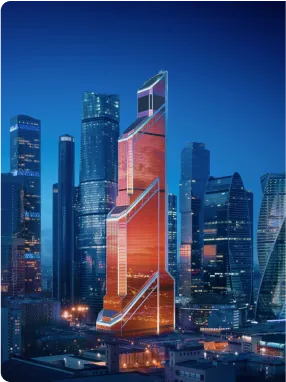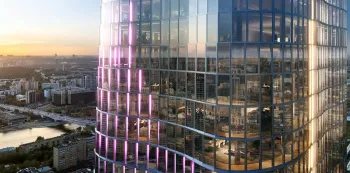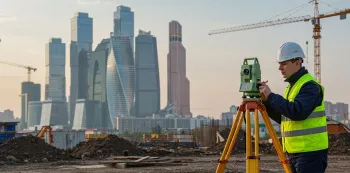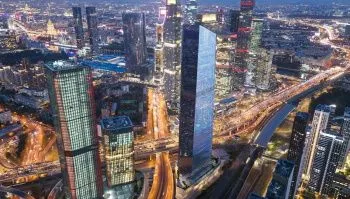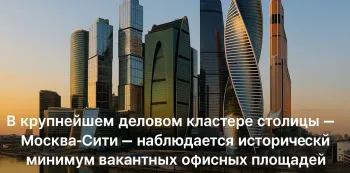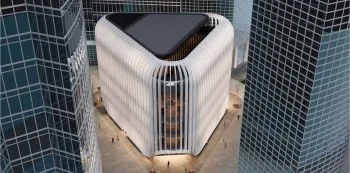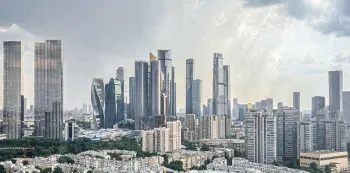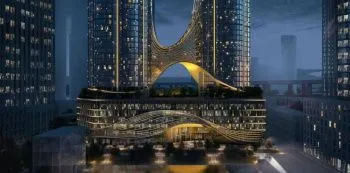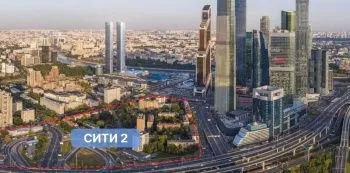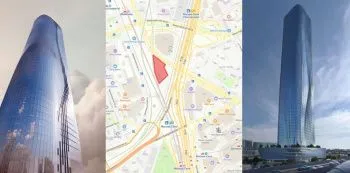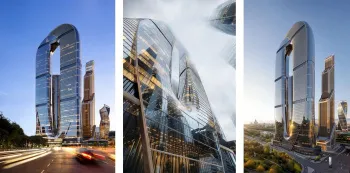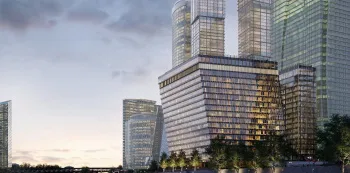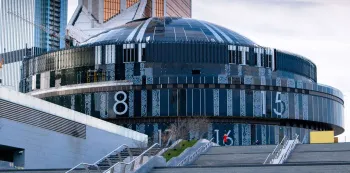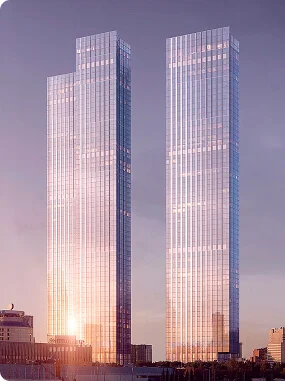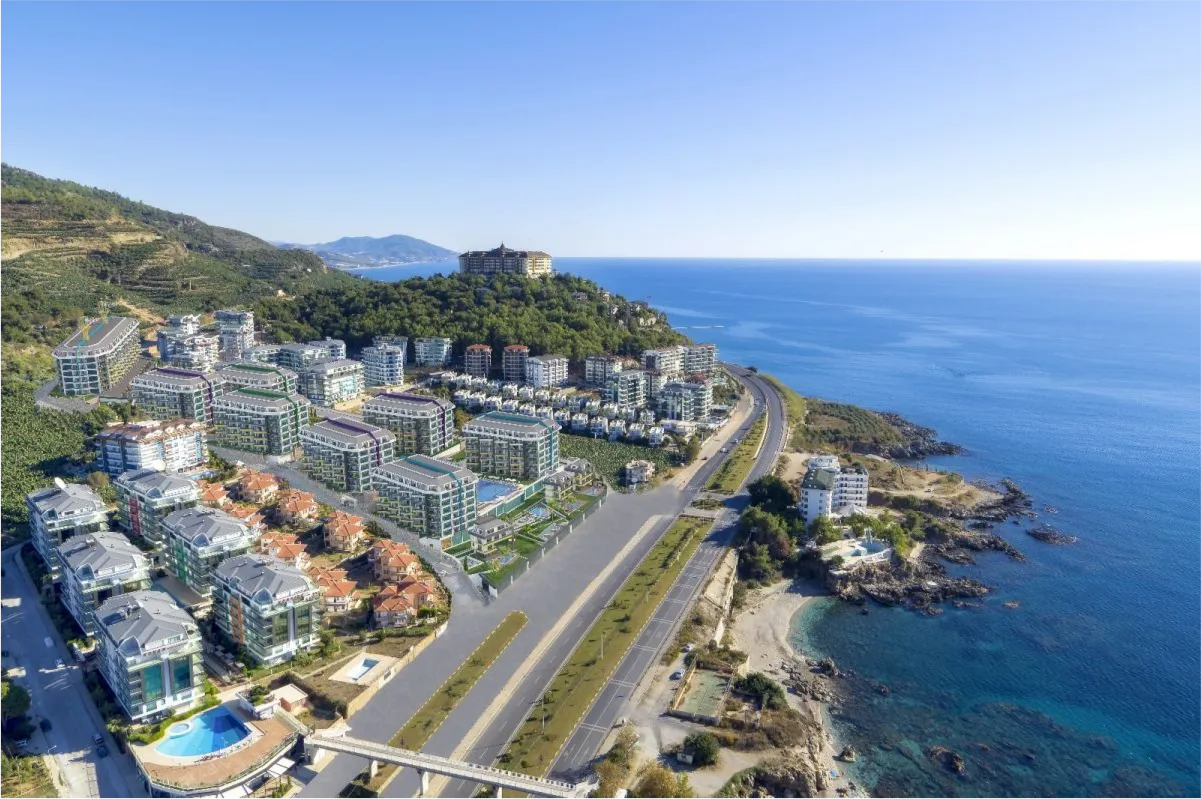
1. Introduction: The new structure of business Moscow
Moscow's office real estate market is entering a period of transformation. With Moscow City's potential for space growth exhausted, city officials and developers are focusing their efforts on developing the surrounding areas. The "Big City" project is a response to the growing supply shortage in the premium segment and a new driver of business activity in the capital.
2. Moscow-City: a mature market with high demand
Key performance indicators (Q3 2024)
-
Office space: 1.5 million sq. m
-
Vacancy rate: 1.9%
-
Average rental rate: 47 thousand rubles/sq. m/year
-
Rate range: from 29 to 77 thousand rubles/sq. m/year
-
Transaction volume (January–September): 78 thousand sq. m
-
Forecast for the end of 2024: up to 360 thousand sq. m.
Trends
-
The vacancy rate has been steadily declining from 12% in 2020 to 1.9% in 2024.
-
Rental rates are reaching historic highs , growing +12% year-on-year.
-
The average transaction size is 723 sq. m, more than halved compared to 2023.
Significant events
-
Deal of the Year: Russian Railways acquired 263,000 square meters in Moscow Towers .
-
The only project for sale in blocks is iCITY . The average price increased from 270,000 rubles/sq. m (2020) to 704,000 rubles/sq. m (2024).
3. New construction: limitations and potential
Moscow City is nearly out of resources for new construction. Major projects include:
-
iCITY Space Tower (MR Group) — 91 thousand square meters, opening in 2025.
-
One Tower , City Tower, plots 4 and 20 – completion 2026–2030.
-
Total future volume of new facilities: up to 2.1 million square meters (including 1.5 million in operation).
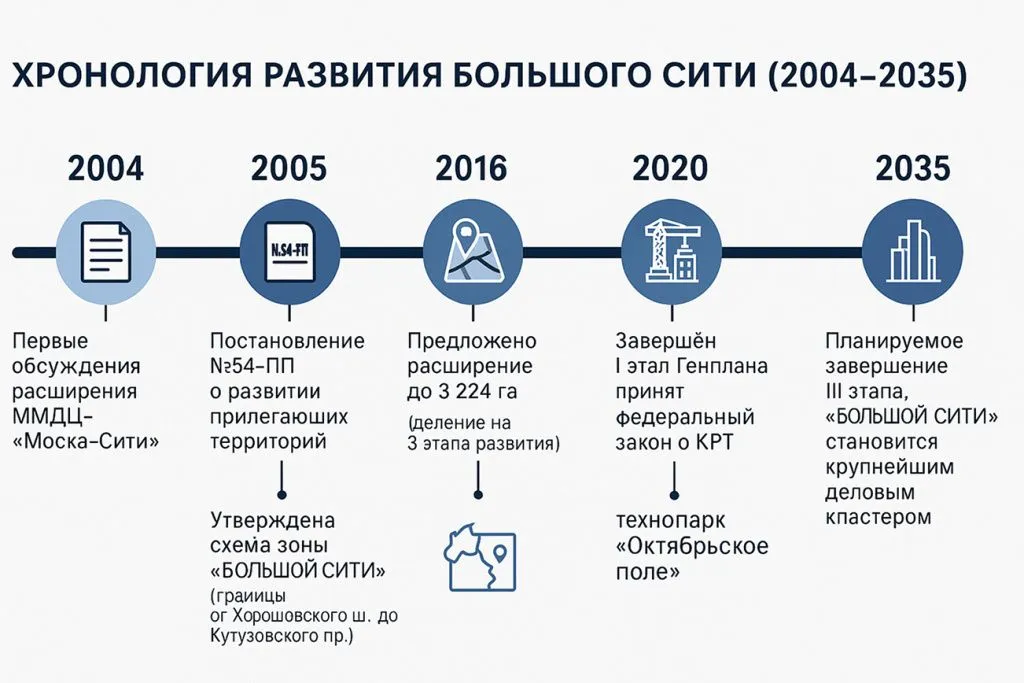
4. Big City: Expansion Strategy
General concept
-
Launched in 2009 as a continuation of Moscow-City.
-
The main development tool is the KRT (complex development of territories) program.
-
Reorganization of industrial zones, transformation into public and business functions.
-
Development of transport, social and engineering infrastructure.
Current and planned indicators
-
Office stock in 2025: 2.85 million sq. m
-
Projected area: ~4 million sq. m
-
Target volume by 2035: up to 6.8 million sq. m
-
Average vacancy rate: 1.5%
-
Average rental rate: RUB 34,100/sq. m/year
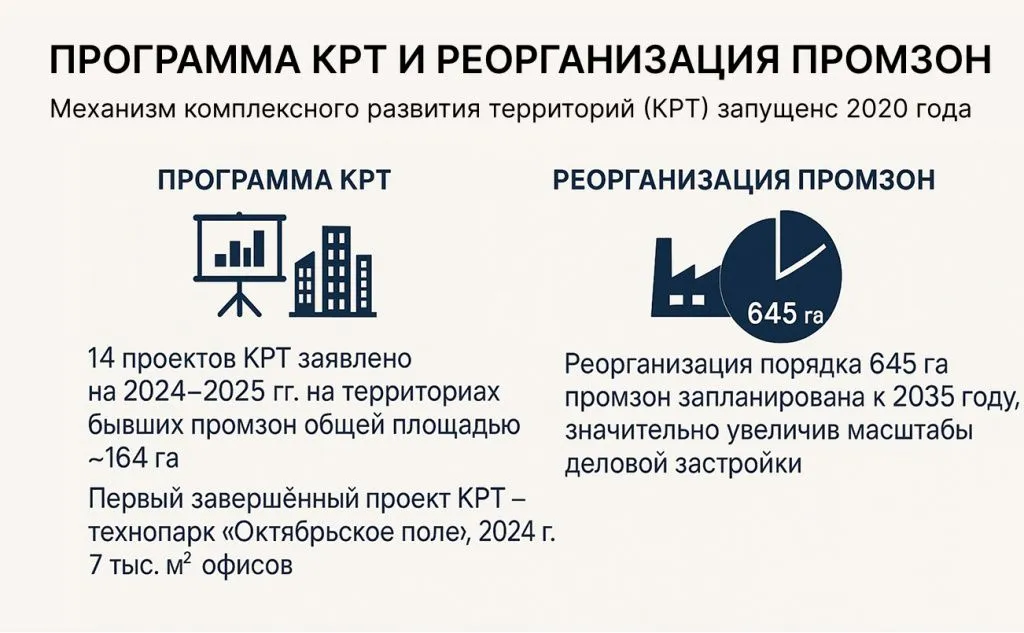
5. Big City Clusters: Comparison and Potential
| Cluster | 2025 (thousand sq. m) | 2035 (thousand sq. m) | Rental rate, thousand rubles | Vacancy rate, % |
|---|---|---|---|---|
| Moscow-City | 1,561 | 2 140 | 51.5 | 1.5% |
| Khodynka | 557 | 2 105 | 37.3 | 2.1% |
| Zvenigorodskaya | 156 | 1,572 | 45.6 | 1.8% |
| Kutuzovsky | 277 | 337 | 37.1 | 0.6% |
| Fili-Mnevniki | 22 | 323 | — | 0.0% |
| Presnya | 260 | 260 | 37.5 | 0.1% |
| October Field | 13 | 18 | 30.0 | 4.3% |
Brief overview
-
Khodynka: the largest increase due to the KRT (the project on 1st Botkinsky Proezd – up to 938 thousand sq. m).
-
Zvenigorodskaya: potential growth of 10 times, active projects - Orbital, JOIS, LIGHT CITY.
-
Fili-Mnevniki: Roscosmos headquarters, covering 200,000 square meters, will be commissioned in 2025.
-
Oktyabrskoye Pole: limited growth, high vacancy rate.
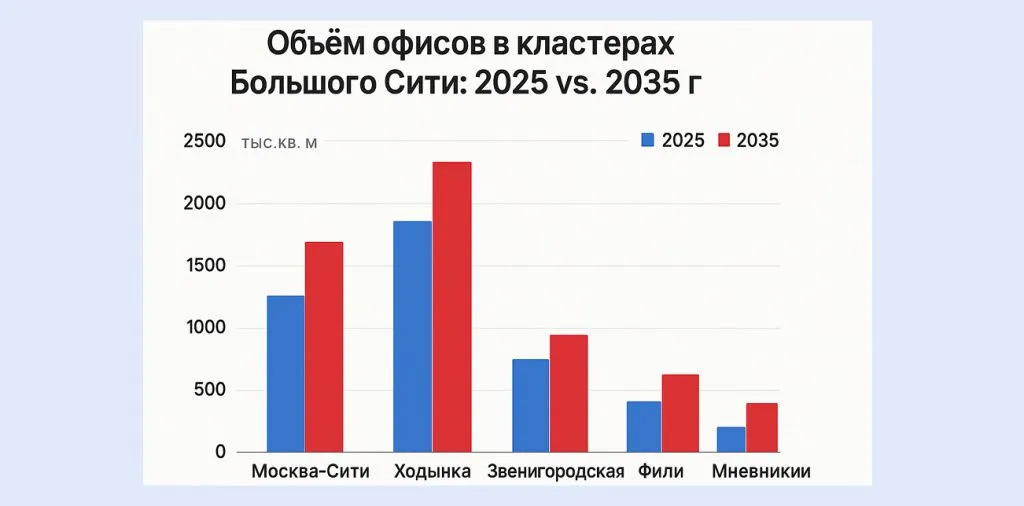
6. Investment attractiveness
Drivers
-
Supply deficit in Moscow City.
-
Infrastructure projects (bridges, roads, metro).
-
Concentration of state corporations, the IT sector, and construction and development businesses.
-
State support and assigned KRT.
Profitability
-
Potential profitability of new properties is up to 11–14% per annum.
-
The most promising clusters are Khodynka and Zvenigorodskaya.
-
Rental rates in new clusters could approach Moscow City levels by 2030.
Risks
-
High dependence on the regulatory environment.
-
Limited number of anchor tenants.
-
Competition between clusters can lead to fluctuations in rates.
7. International comparison
| Location | Rent (in rubles) | Vacancy | Comment |
|---|---|---|---|
| Moscow-City | 47,000 | 1.9% | Cost leader, minimum vacancy |
| Big City (medium) | 34,100 | 1.5% | High potential, active development |
| Belorusskaya (Moscow) | ~30,000 | ~5% | Moderately saturated market |
| La Défense (Paris) | ~66,000 | ~9% | Stable demand |
| Canary Wharf (London) | ~75,000 | ~11% | Post-pandemic recovery |
8. Forecast to 2035
Scenarios
-
Baseline: 4 million square meters of new space, rate stabilization, vacancy rate of 5–6%
-
Optimistic: 6.8–7 million square meters, rate increase to 45,000 rubles, yield up to 14%
-
Conservative: partial implementation of projects, increase in vacancies to 8-10%
Conclusion
The Greater Moscow City is becoming the new core of business activity. Moscow-City will retain its premium segment status, but it is the new clusters that will drive supply growth. If the business climate remains stable, by 2035 Moscow will have a fully-fledged multi-core business structure comparable to leading European cities.









 Advertising on the portal
Advertising on the portal

 7320
7320 